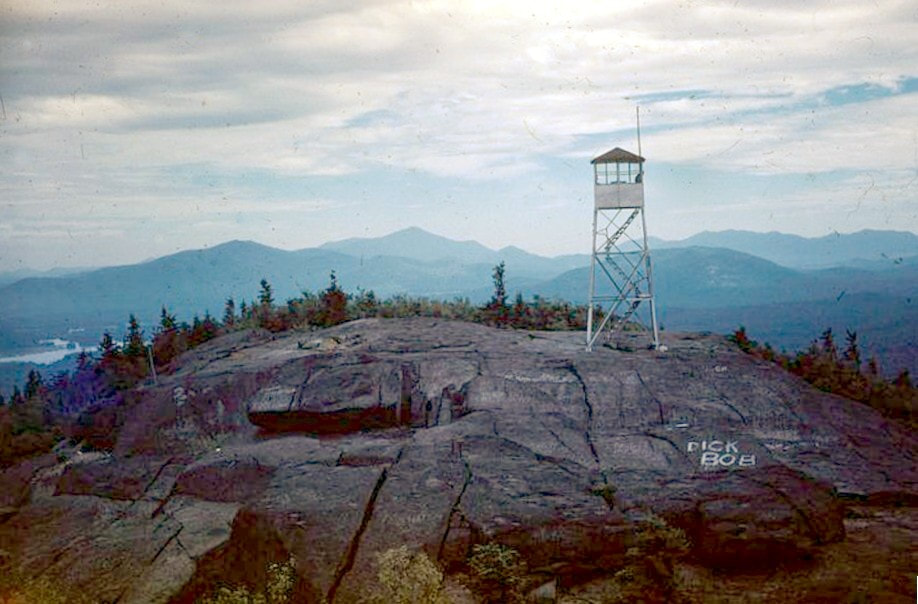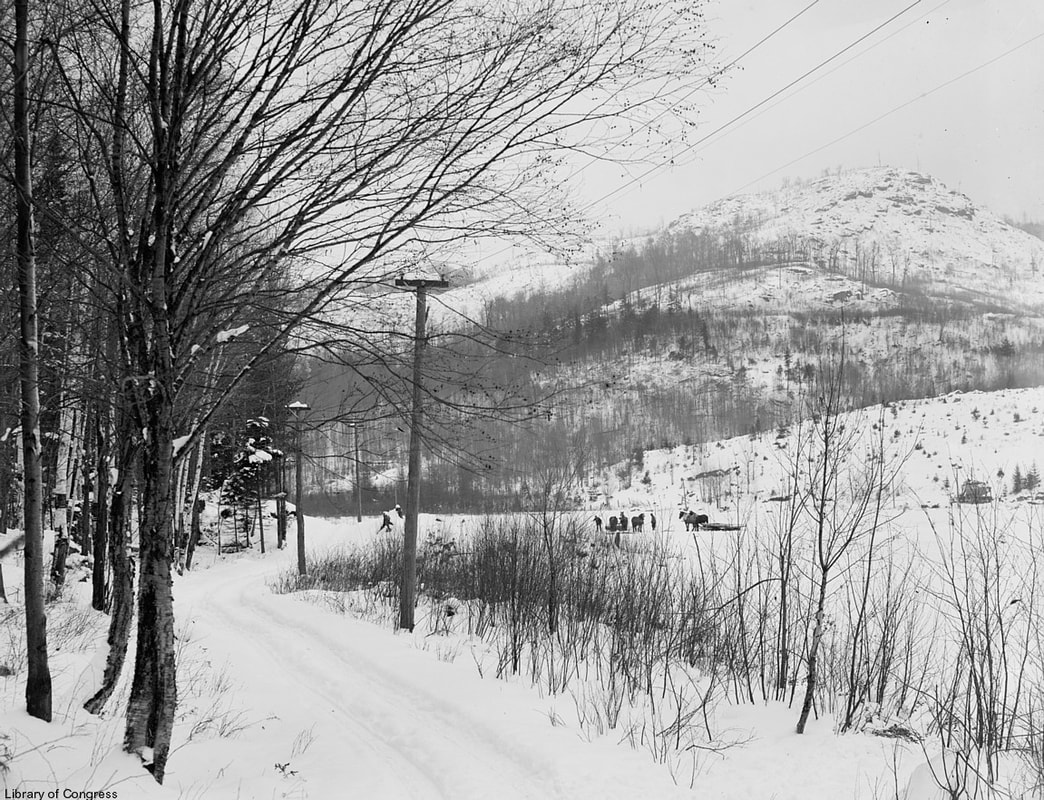|
by Sunita Halasz While the coronavirus pandemic rages like a figurative wildfire all over the world in 2020, actual wildfires are setting horrific records out west this year. The combined acreage of burned area surpasses the size of the state of New Jersey. The loss is not just to forest land, but to homes and businesses, and in some cases whole communities have been apocalyptically reduced to ash. It’s hard to imagine that similar widespread forest fires once burned the Adirondacks around the turn of the twentieth century. Flames spread throughout the Park, and ash from Adirondack fires fell as far away as Albany, and smoke was reported in New York City. Fires in 1903 and 1908 were particularly widespread in the North Country. 1903 was a dry year for the entire Northeast. In the Adirondacks, snowfall was less than average, and from April to June that year, only 0.2 in. of rain was recorded. In 1904, W. F. Fox wrote in “Forest Fires of 1903,” a bulletin of the NYS Forest, Fish, and Game Commission: The line of the New York Central from Fulton Chain to Mountain View was bordered with smoke and flames, except on the eight-mile stretch through the private preserve of Dr. William Seward Webb, where a large number of patrols were employed at his expense to follow each train, night or day, and extinguish the locomotive sparks that fell along the road. Many Adirondack fires were caused by live coals that escaped from unscreened locomotive stacks and fell on dry, vertical slash in the heavily logged forests along railroad lines, though Professor Emeritus of Paul Smith’s College, Dr. Michael Kudish, estimates that only about eleven percent of fires were caused by trains. More commonly, forest fires were caused by escaped campfires and brush-clearing fires, and the furnaces associated with mining operations in the Park. With the exception of mining furnaces, campfires and burning brush piles remain the top threat for wildfire in the Adirondacks today. One of the largest acreages burned during the 1903 fire season was around Lake Placid in a fire started by high winds fueling a burning brush pile. That fire spread into the High Peaks and is the one that burned down Henry Van Hoevenburg’s Adirondack Lodge. Mt. Baker in Saranac Lake burned in 1903 and again in 1908 when dry conditions and logging slash once again proliferated throughout the region. The 1908 fire spread east to McKenzie Mountain and threatened the village of Saranac Lake, as well, but it ultimately remained contained to the wilderness. In 1914, the Saranac Lake Fish and Game Club ordered 15,000 Scots pine (also called Scotch pine) grown at the State Nursery at Saranac Inn, at a price of just $60 for the whole load, and the trees were planted by a volunteer force of local men and Saranac Lake High School boys.
A May 15, 1914 article in the Lake Placid News states, “It is not expected that the 15,000 trees will make much of an impression on the stony sides and summit of Baker...” The prediction was wrong! Those Scots pines are still very visible as a dark green patch in all seasons up on Baker Mountain today. After fires burned over 400,000 acres in the Forest Preserve in 1903, and nearly 300,000 acres in 1908, strict laws were enacted that set up a patrol of railroad properties, forced railroads to use petroleum for steam locomotive fuel instead of coal or wood, punished those responsible for escaped fires, enabled the building of fire towers (the first fire tower built in the Adirondacks was on Mt. Morris in Tupper Lake in 1909), and gave executive power to the Governor to close the Forest Preserve to recreationists in times of high fire risk. The widespread Adirondack fires in the early part of the twentieth century were an anomaly due to the convergence of several factors including climate and fuel loads. Fire in northeastern forests has been historically absent, as shown by fossil pollen and charcoal records which estimate a fire return frequency of many hundreds to thousands of years, due to swift leaf litter decomposition, low wind risk, widely and rapidly varying topography, and the fire-resistant nature of northern hardwoods. This doesn’t mean, however, that fires can’t happen here today. We must remain vigilant and follow local regulations about campfires, burning brush, proper disposal of cigarette butts, and so forth. The first time I ever visited Vermontville it was to research the site of the 1991 fire near Kate Mountain Park that burned 300 acres. I was a graduate teaching assistant for an ecology course at Cornell University and, of all the places we could have visited in the state, we went to Vermontville because it was such an excellent opportunity to observe post-fire vegetation recovery. Now I live in Saranac Lake and coach our homeschool soccer team at Kate Mountain Park each fall, so I am watching the forest there grow a little taller each year and seeing the plants in the understory get a little more shaded out. But like we are seeing out west, slight changes in climate, exacerbated by careless actions of humans, can have drastic damaging ripple effects that will be felt for decades. Images: -Ampersand Mountain fire tower, c. 1960. Photograph by Donald Gunn Ross, courtesy of Julie Ross. -Mount Baker, undated. Library of Congress photo.
1 Comment
Mato Ray
3/28/2022 08:56:16 am
Reply
Your comment will be posted after it is approved.
Leave a Reply. |
About us
Stay up to date on all the news and happenings from Historic Saranac Lake at the Saranac Laboratory Museum! Archives
August 2022
Categories
All
|
Historic Saranac Lake at the Saranac Laboratory Museum
89 Church Street, Suite 2, Saranac Lake, New York 12983
(518) 891-4606 - [email protected]
89 Church Street, Suite 2, Saranac Lake, New York 12983
(518) 891-4606 - [email protected]

Historic Saranac Lake is funded in part by the New York State Council on the Arts with the support of the Office of the Governor and the New York State Legislature,
and an Essex County Arts Council Cultural Assistance Program Grant supported by the Essex County Board of Supervisors.
and an Essex County Arts Council Cultural Assistance Program Grant supported by the Essex County Board of Supervisors.
© 2023 Historic Saranac Lake. All Rights Reserved. Historic photographs from Historic Saranac Lake Collection, unless otherwise noted. Copy and reuse restrictions apply.


 RSS Feed
RSS Feed